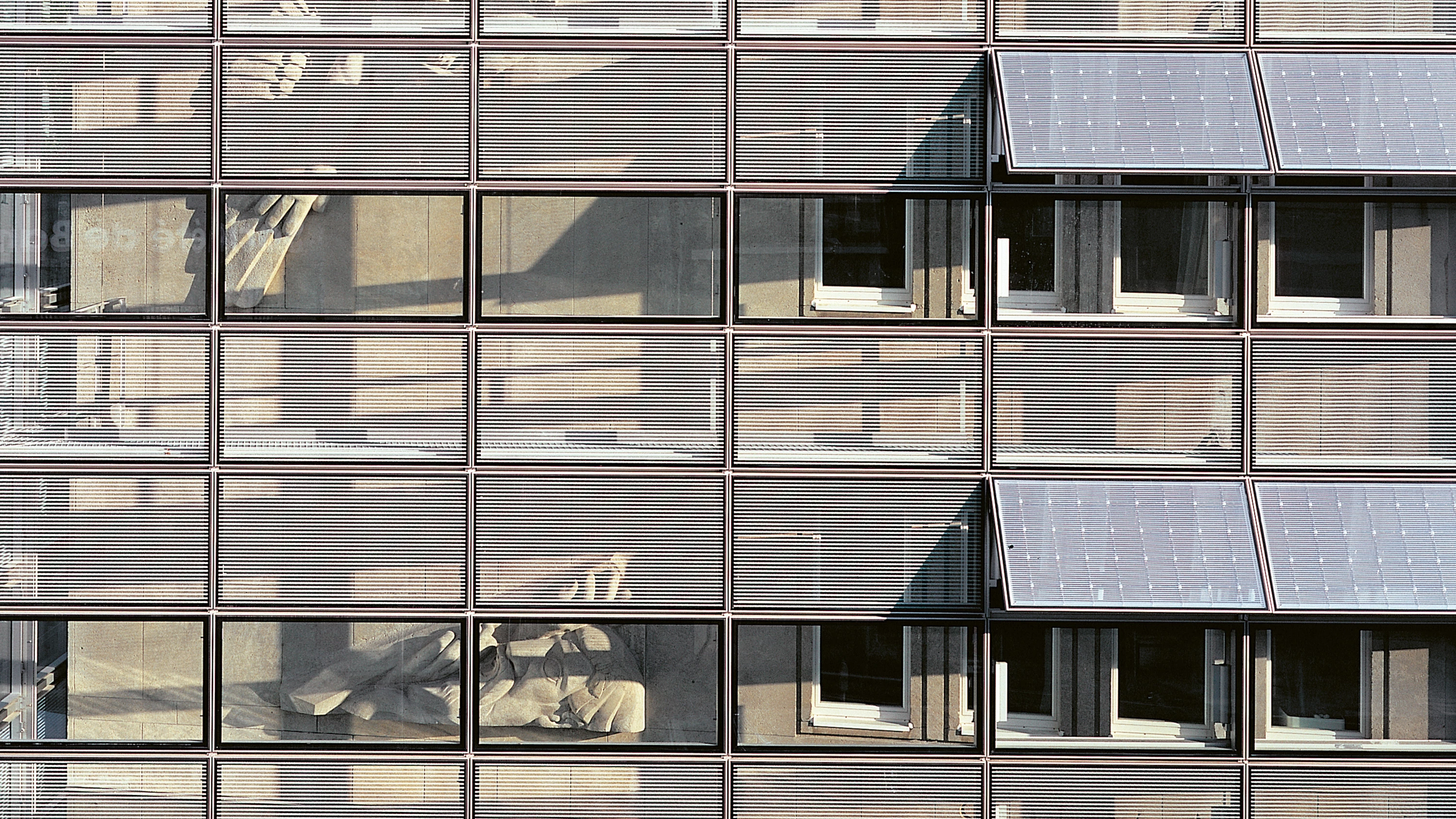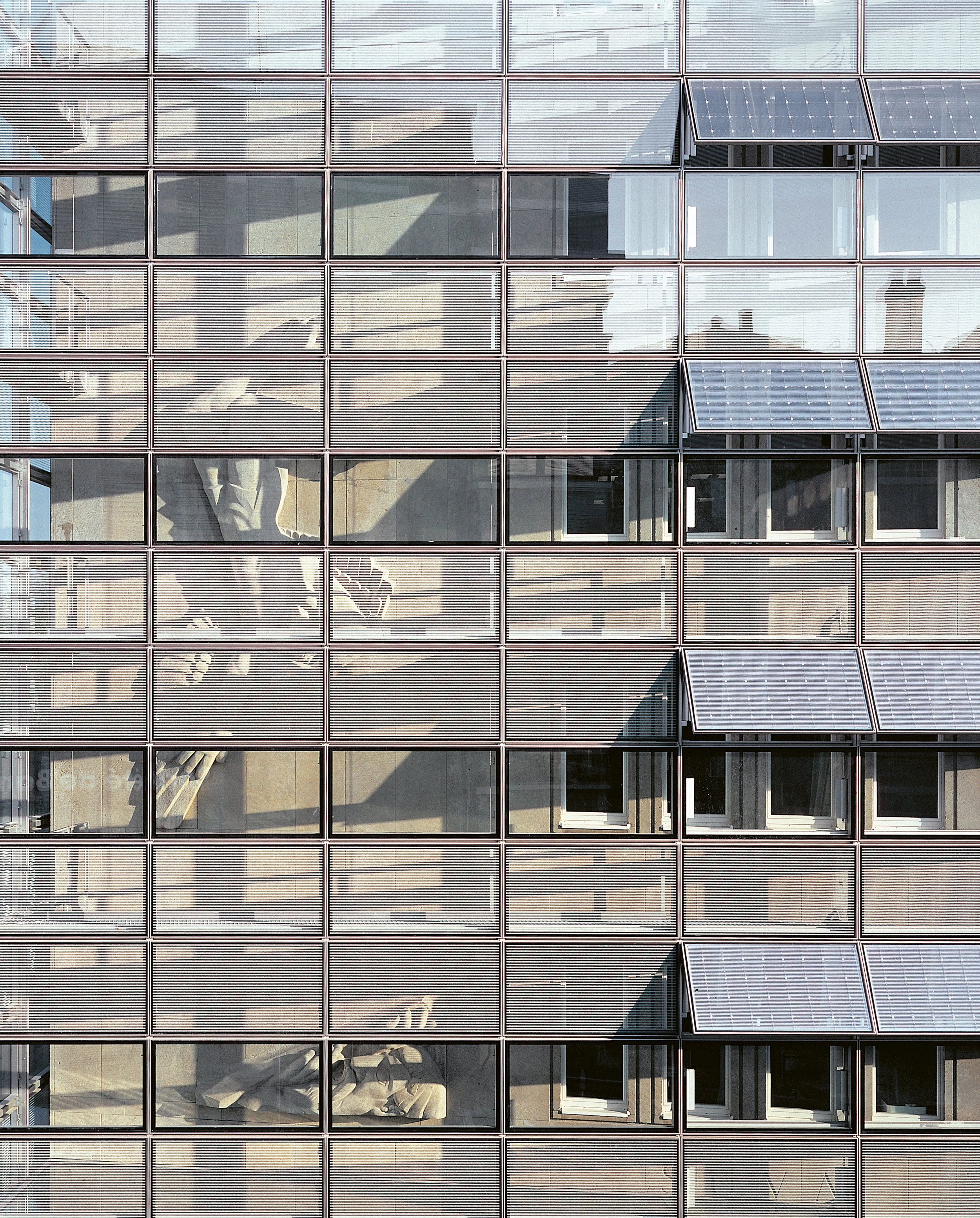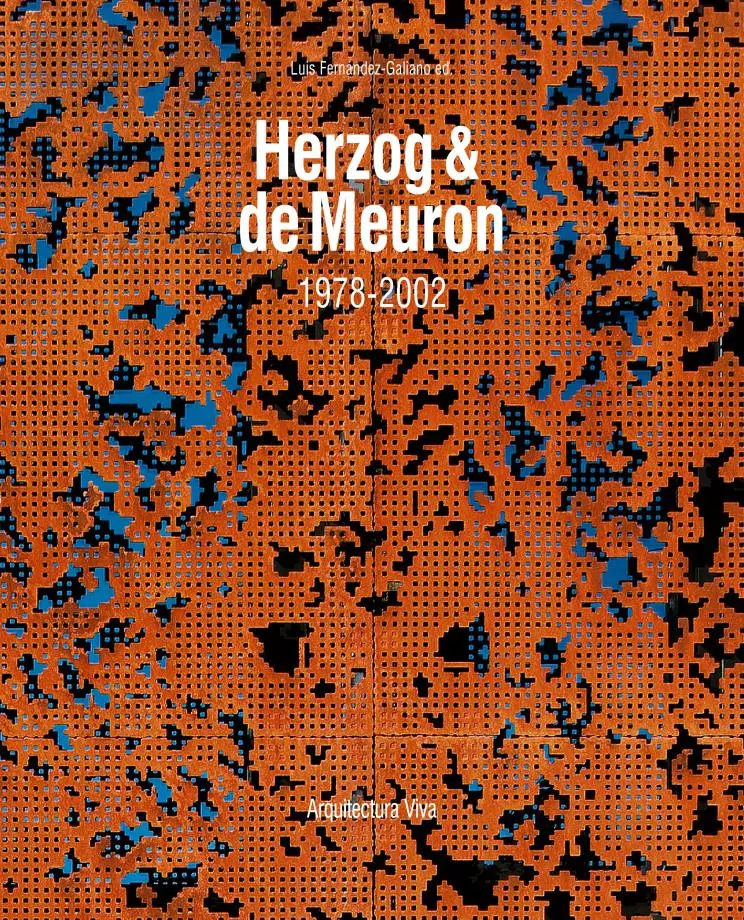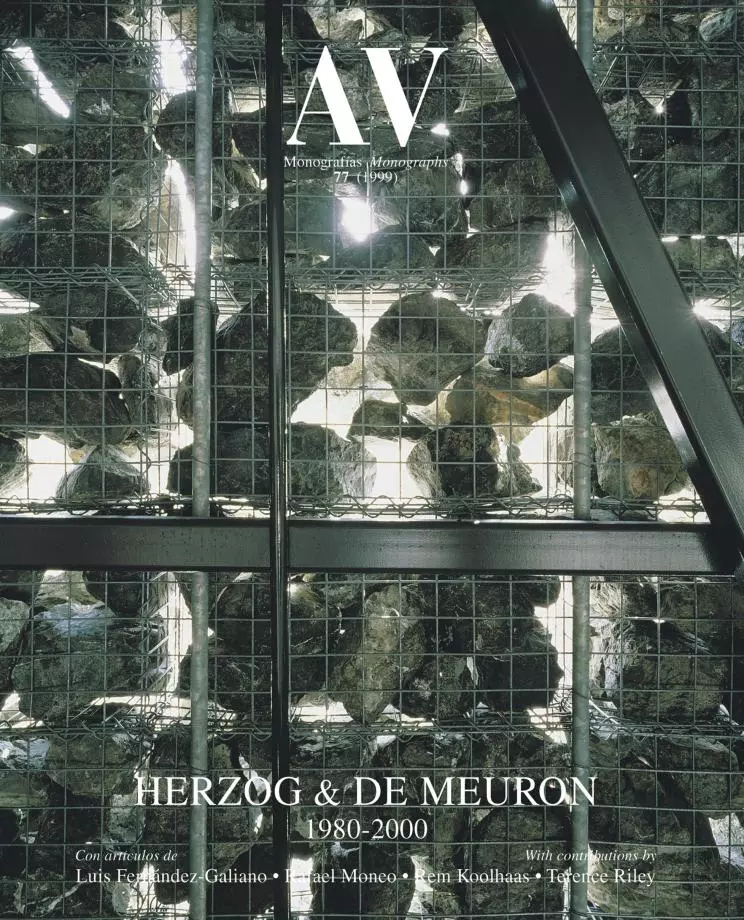Suva House, Basel
Herzog & de Meuron- Type Refurbishment Collective Housing Commercial / Office
- Material Glass
- Date 1989 - 1993
- City Basel
- Country Switzerland
- Photograph Ruedi Walti
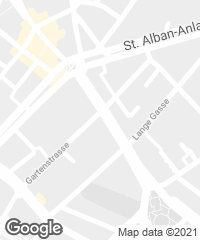
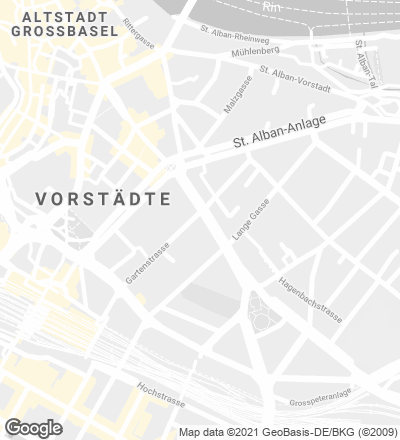
When the suva insurance company drafted the brief for the extension to its head office in Basel, it was left to the architects to decide whether to preserve the existing building that partially closes the corner of a closed city block or demolish it to raise from scratch a completely new complex. The 1950’s construction that had housed the company offices up until now had been kept in a good state of repair, and was therefore maintained. After weighing up several different solutions for closing the block – ranging from a facade with successive pieces set back from the front to an independent body at right angles to the existing building – it was decided to fully occupy the oblique corner, merging the new and old behind a glass wrapper.
The curtain wall not only improves the heat and soundproofing performance of the old windows, but it also provides a plane for experiments with the optic properties of different types of glass. The surface of the facade is divided into horizontal strips corresponding to the lines imposed by the existing fenestration; each strip has a different function. The belt corresponding to the visual plane is transparent with individually opening windows. Evoking the bas-relief that was chiselled into the old facade, the company logo is screenprinted, completely invading the sill area. The top third of each floor is hidden behind glass prisms sunshades that filter the sun and prevent the building from overheating.
This skin and its serene, urbane presence camouflage a drastic reform in the interior organization of the programme. The entrance, previously in the headwall, is shifted to one of the sides of the building to establish a relationship between the street and the courtyard via a double height foyer. The office space releases the top three floors and the attic area of the extension for use as apartments, which display their domestic nature with the parapets and wooden roller blinds that close their balconies. As on previous occasions, the project includes several collaborations with artists from other disciplines – two ponds by the landscape designer Dieter Kienast introduce green reflections alongside the entrance, while a photograph by Thomas Ruff and two panels by Adrian Schiess in red and beige merge into the entrance foyer as part of its architecture. On the walls of the café, the painting The Fall of Icarus by Brueghel the Elder is reproduced in black and white fragments to recreate the motif of the company’s old bas-relief.[+][+]
Cliente Client
Schweizerische Unfallversicherungsgesellschaft Luzern
Arquitectos ArchitectsJ
acques Herzog, Pierre de Meuron, Harry Gugger
Colaboradores Collaborators
K. Lazzarini, D. Gysin, S. Häusrmann, U. Kaspar, A. Peissard, C. Schlemmer, M. Erbsland, R. Plangger, S. Marbach, A. Adamczyk, P. Guignard, R. Hösl, P. Kaufmann, C. Steiger
Consultores Consultants
Stöckli, Kienast & Koeppel (paisajismo landscape)
Fotos Photos
Ruedi Walti

